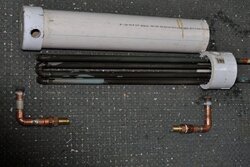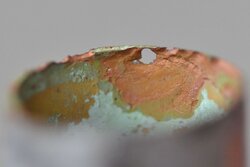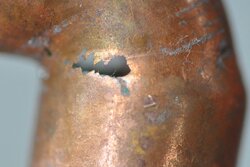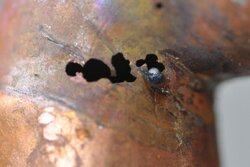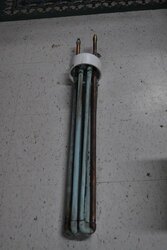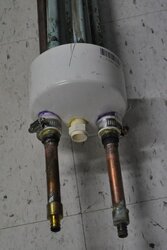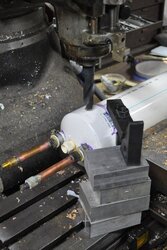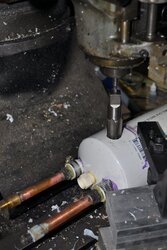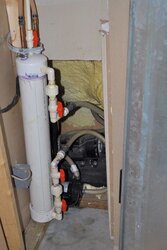I built a hot tub heat exchanger back in 2002 and plumbed my hot tub as an extra zone on my heating system. Some folks wanted pictures of the construction. Unfortunately, I can now provide them.
A couple of weeks ago I heard a hissing noise from the heat exchanger. A quick exploration uncovered a hole (!) on the back side of a copper elbow on the inlet. Since it was under suction, a piece of duct tape fixed it for the short term. I just drained the hot tub and removed the heat exchanger for inspection.
I disassembled the HX (requires some hacksaw work) and took pictures.
The copper was eaten away from the inside, but only in very limited locations. There was no corrosion on the inner tubing that carries boiler water, though there's some kind of funky green patina on them which flakes off.
Corrosion seems to be limited to places where there could be turbulence and eddies, perhaps with trapped bubbles. The hot tub had an ozone generator for years, and it's a bromine-based system.
More posts and pictures to follow.
A couple of weeks ago I heard a hissing noise from the heat exchanger. A quick exploration uncovered a hole (!) on the back side of a copper elbow on the inlet. Since it was under suction, a piece of duct tape fixed it for the short term. I just drained the hot tub and removed the heat exchanger for inspection.
I disassembled the HX (requires some hacksaw work) and took pictures.
The copper was eaten away from the inside, but only in very limited locations. There was no corrosion on the inner tubing that carries boiler water, though there's some kind of funky green patina on them which flakes off.
Corrosion seems to be limited to places where there could be turbulence and eddies, perhaps with trapped bubbles. The hot tub had an ozone generator for years, and it's a bromine-based system.
More posts and pictures to follow.


